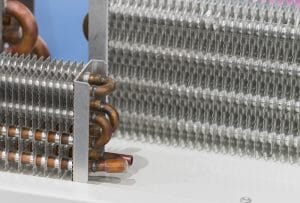 Whether it’s the significantly reduced costs or the lower energy requirements compared to other cooling solutions, heat exchangers have provided a wide range of extensive benefits to the realm of thermal management. For example, the process of cooling electrical enclosures and control panels in large manufacturing operations is made much simpler when companies don’t have to rely on difficult-to-manage air conditioning or air compressing equipment. The secret to those benefits lies largely in the innovative approaches that heat exchangers take to handing electrical waste heat. By using natural, eco-friendly heat transfer processes instead of more demanding HVAC technologies, heat exchangers have streamlined electrical thermal management in several important ways.
Whether it’s the significantly reduced costs or the lower energy requirements compared to other cooling solutions, heat exchangers have provided a wide range of extensive benefits to the realm of thermal management. For example, the process of cooling electrical enclosures and control panels in large manufacturing operations is made much simpler when companies don’t have to rely on difficult-to-manage air conditioning or air compressing equipment. The secret to those benefits lies largely in the innovative approaches that heat exchangers take to handing electrical waste heat. By using natural, eco-friendly heat transfer processes instead of more demanding HVAC technologies, heat exchangers have streamlined electrical thermal management in several important ways.
A more efficient approach to enclosure cooling
Enclosure cooling is one of the oldest and most common uses for modern heat exchangers. Regardless of the specific technologies that companies employ, the need to keep vital electrical enclosures properly cooled is a constant. Heat exchangers approach enclosure cooling not by circulating chilled air through them, but by continuously absorbing and transferring the waste heat that electrical components give off within the enclosure. This prevents the heat from accumulating, and unlike traditional cooling options, it only requires minimal equipment and a safe, environmentally friendly cooling fluid (such as water).
More eco-friendly thermal solutions
From cooling electrical enclosures to facilitating processes like wastewater treatment and other thermal management-heavy applications, heat exchangers have also been notable for their ability to help companies lower their environmental footprints. On one hand, they require minimal energy compared to their traditional counterparts, which means companies can reduce their overall energy usage. The cooling fluids that heat exchanger units rely on are eco-friendly and tightly sealed within the unit. They’re less likely to leak, and if they do, they won’t become hazardous to the environment or to nearby employees. The heat transfer processes that heat exchangers use have also become staples in more innovative green energy efforts, such as harnessing and distributing solar energy.
Streamlined electrical cooling in hazardous locations
While heat exchangers have been a benefit to most industries, those that involve high-performance technologies in hazardous locations have often benefited most. With custom thermal solutions designed specifically for use in hazardous locations, companies can enjoy safer, more consistent, and more reliable operations. Streamlined electrical thermal management not only helps save costs, but also provides a higher level of safety and ingress protection for both the heat exchanger and the machinery or equipment that it is designed to cool.
For more information about how thermal management benefits from modern heat exchangers, call Noren Thermal Solutions in Taylor, TX, at 866-936-6736.







